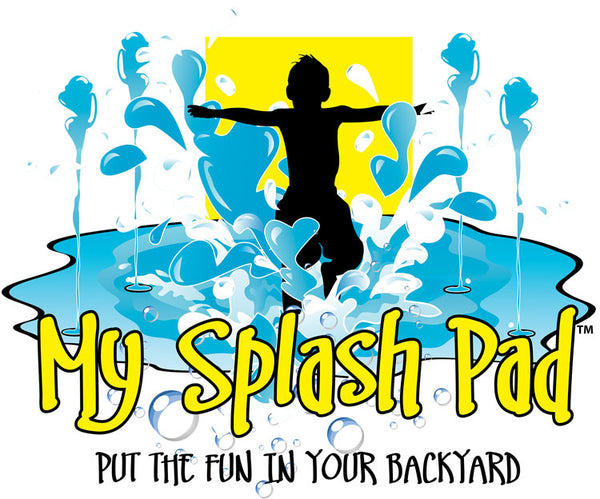Frequently Asked Questions
What is a splash pad?
Splash pads go by many names – spray parks, splash zones, water playgrounds, beaches, and so forth. They also take on many forms – commercial spray parks, light commercial splash zones, backyard water parks, and dazzling patio water features.
But what is it? What is a splash pad?
It is simply an area fitted with a non-slip surface or safety surface and various nozzles and features that can shower, spray, rain, mist, and shoot streams of water to create an awe-inspiring and inviting place for recreational water play in nearly any venue and neighborhood.
With preserving one of our most precious resources in mind, My Splash Pads are designed to operate with virtually zero water depth. And, as the water splashes onto the surface, it is collected, filtered, sanitized, and re-circulated to keep the water fun flowing in an eco-friendly way.
Great swimming pool alternative or add-on!
Most residential splash pads and light commercial splash pads cost less than the installation of a residential swimming pool. They are also less expensive to operate and maintain. To top it off, a splash pad can add value to your property without adding the risks inherent with swimming pools.
If a pool is on your water play must-have list, you can add the splash pad experience to your existing swimming pool or new pool construction with a My Splash Pad pool tie-in.
How is the water kept clean?
The system has a chlorinator and a UV light sanitizer/clarifier to kill 99.99% of bacteria and viruses. The UV light is a unique feature of My Splash Pad kits. For optimum results, the chlorinator should be checked daily when the splash pad is in use.
Will this affect my water bill?
There is a cost associated with the initial fill of the system. the systems don’t usually require much water after that. the average tank is 250 gallons.
What is the average monthly cost to run the system?
If it is on for eight hours a day for 30 days it would cost approximately $20 to $40 per month, depending on your electric rates.
What do you do with it in the winter?
In late fall, the pipes need to be blown out so that the lines don’t break in the winter. This is similar to what’s required for a sprinkler system. a small air compressor is all that’s needed, and it takes about half an hour to do the job.
How soon can I landscape or reclaim the areas surrounding the splash pad?
Our recommendation is no earlier than four days after the splash pad install is completed. the concrete needs three days to cure. any interruption in the curing process puts the splash pad at risk for damage.
Do you offer financing?
We accept Visa and MasterCard.

